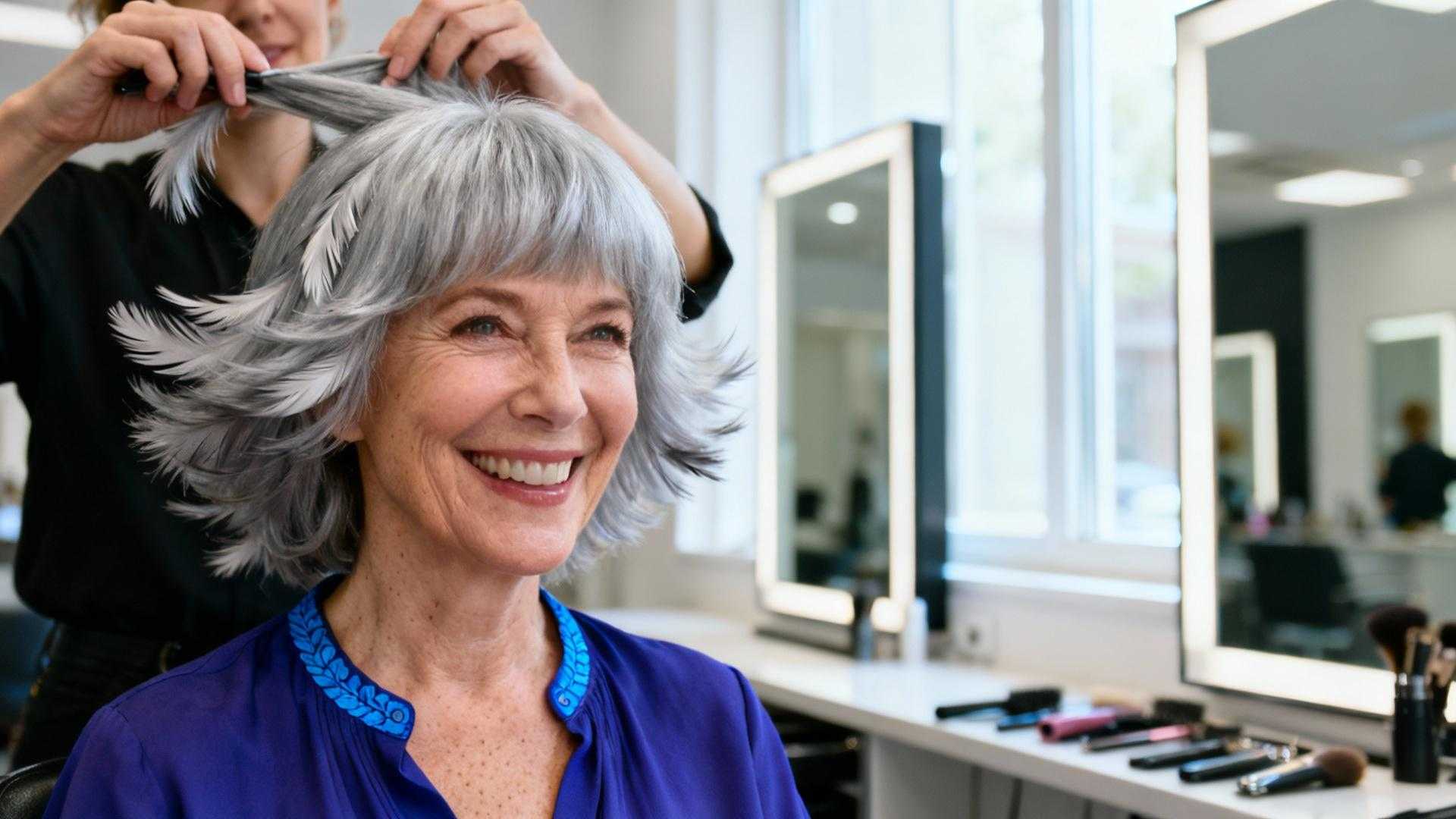I still remember the afternoon my hairstylist pulled out photos from the 1970s and said, “These styles are perfect for you.” At 64, I’d been struggling to find a cut that worked with my thinning hair and active lifestyle. But looking at those feathered layers and soft, flippy ends, something clicked. Could a style from five decades ago actually be the answer to my modern hair challenges?
Why the 70s are having a moment again
The resurgence of 1970s hair trends isn’t just nostalgia—it’s practical genius for women over 60. These cuts were designed for movement and volume, exactly what aging hair needs most. Emma Rodriguez, a celebrity hairstylist, explains the appeal perfectly.
“A textured short pixie cut is a game-changer for women over 70, boosting volume effortlessly and requiring minimal styling time.” — Emma Rodriguez, Celebrity Hairstylist
The beauty of these vintage styles lies in their versatility. Whether you have fine, thick, or curly hair, there’s a 70s-inspired cut that adapts beautifully to your texture and face shape.
The feathered layer revolution
Feathered layers were the signature look of the 70s, and they’re making a powerful comeback. This technique uses lightweight layering shears to reduce bulk while adding natural movement. For women dealing with thinning hair, it’s transformative.
Products like Kenra Mousse at around $20 have become essential for recreating this iconic look. The mousse adds texture and volume without weighing hair down—a common complaint with heavier styling products. For more inspiration on short cuts that restore confidence, the right styling approach makes all the difference.
Three products that actually work
After testing numerous products, these three consistently deliver salon-quality results at home:
- Texturizing spray for volume: Oribe’s formula at $45 creates natural lift without stiffness, perfect for maintaining feathered styles throughout the day.
- Heat protecting cream: L’Oréal Professionnel’s $30 option safeguards hair during styling while adding shine and smoothness.
- Lightweight finishing spray: Bed Head Masterpiece Hairspray at $15 holds curls and flips without that crunchy, dated feeling.
The bob that changed everything
My friend Janet tried a layered bob last spring after years of keeping her hair long. The transformation wasn’t just physical—her whole energy shifted. The cut framed her face beautifully and took minutes instead of hours to style each morning.
For those exploring different bob variations after 60, the 70s-inspired version offers maximum versatility. Salon services typically range from $50 to $150, depending on your location and stylist expertise.
Managing the transition naturally
Many women combining these vintage cuts with their natural gray hair discover an unexpectedly chic result. The soft texture and movement of 70s styles complement silver tones beautifully, creating an elegant, modern look.
Chris Appleton, a renowned hair expert, emphasizes the importance of strategic highlighting: “Highlighting the fringe with a ‘money piece’ brightens the face and lifts the overall look.”
If you’re considering embracing your natural gray, these textured cuts provide the perfect framework for showcasing your authentic color.
What stylists wish you knew
Professional hairstylists consistently recommend bringing reference photos to your appointment. The 70s encompassed many different styles, from Farrah Fawcett’s feathered waves to Dorothy Hamill’s wedge cut.
- Communication is key: Describe your lifestyle and how much time you’re willing to spend styling each morning.
- Consider your face shape: Certain 70s cuts flatter round faces while others suit angular features better.
- Start gradually: If you’re nervous about a dramatic change, begin with subtle layers and adjust from there.
- Maintenance matters: Schedule trims every 6-8 weeks to maintain the shape and prevent split ends.
The confidence factor
Beyond the practical benefits, there’s something empowering about embracing a bold, retro-inspired look. These styles make a statement—they’re intentional, stylish, and unapologetically feminine.
For additional ideas on cuts that create youthful effects, the French influence on 70s styles offers another compelling option.
Could this be your next chapter?
The 70s hair revival proves that sometimes looking back helps us move forward. These styles work because they were designed for real life and real movement—not just for photo shoots. Whether you opt for a textured pixie, feathered layers, or a classic bob, you’re choosing a cut with proven staying power. What’s holding you back from trying a style that could transform not just your hair, but how you feel every morning when you look in the mirror?
